The first day of March brought a fun surprise — a new bird! I was so excited, my squeal of delight knocked the bird clear out of the tree, even though I was still in the kitchen, viewing the tiny wonder through the glass.
I grabbed my camera anyway and waited, leaning my elbows on the counter, camera and big lens at the ready. Shortly, up comes the bird from the far side of the huge limb, and I pressed the shutter!
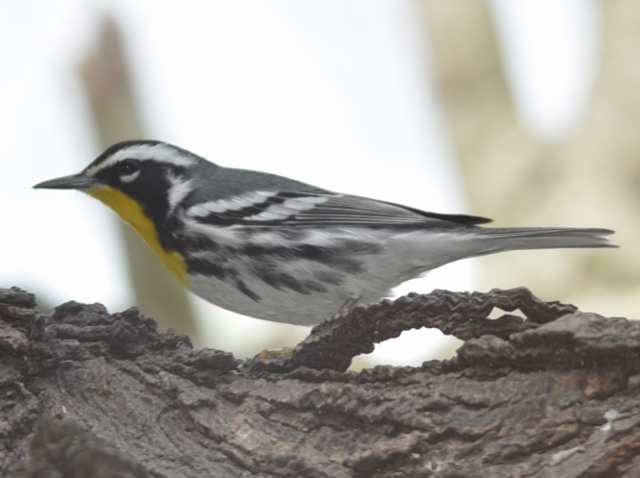
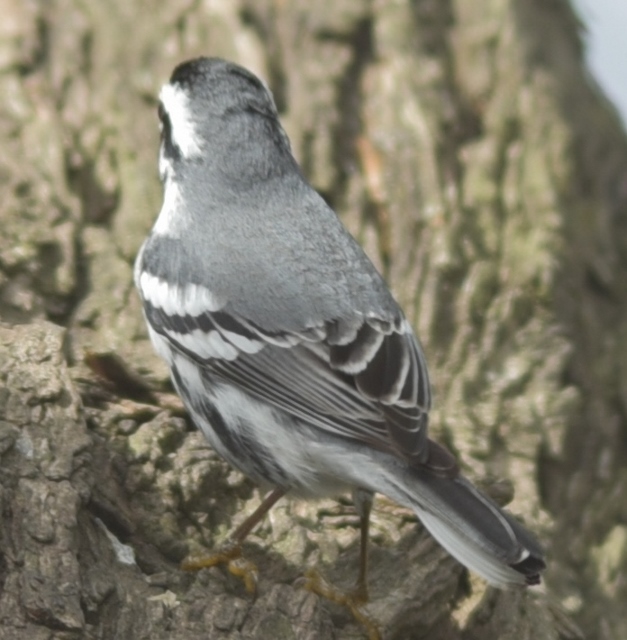
VOILA! A Yellow-throated warbler, according to www.iNaturalist.org. Thrilling! Although it wasn’t new. I’d first captured a distant shot of a Yellow-throated warbler flying into a Washingtonian palm on December 31. That shot too, had been identified by iNaturalist, even though the yellow throat was not visible.
I hadn’t scared the bird off. As I wrote in a nature article for the McAllen Monitor — https://rgvctmn.org/warblers-that-stay-for-the-winter/ — warblers are tiny, skittish, quick and wily! They dart through tree branches. They hardly perch for any length of time before jetting off, performing still more aerial feats. Or so it seems. They’re catching insects. This yellow-throated warbler was busy snagging them from the crevices in the bark of the honey mesquite.
As much fun as it was to see the new-to-the-window-feeder-tree warbler, I got back to what I was writing for today’s post.
Back in January, the 24th, to be exact, I stopped alongside the road, quite near my house, to photograph the first sighting of Tiny Tim (Thymophylla tenuiloba) in the new year!
It was quite early, but it’s been a mild winter so I wasn’t surprised to espy this harbinger of a Deep South Texas spring.
Surprisingly, the plant wasn’t Tiny Tim at all. Close up, the flowers were like square-flowering buttercups. (That would be a mid-Western buttercup.)
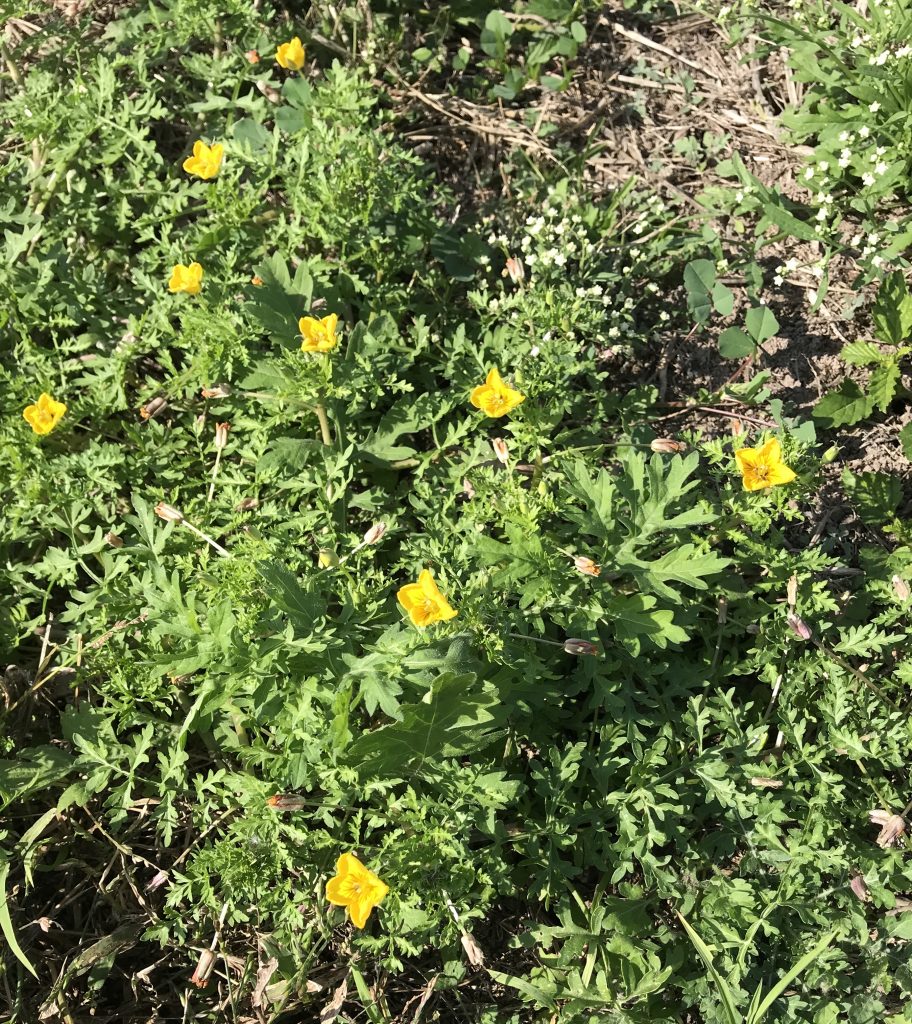
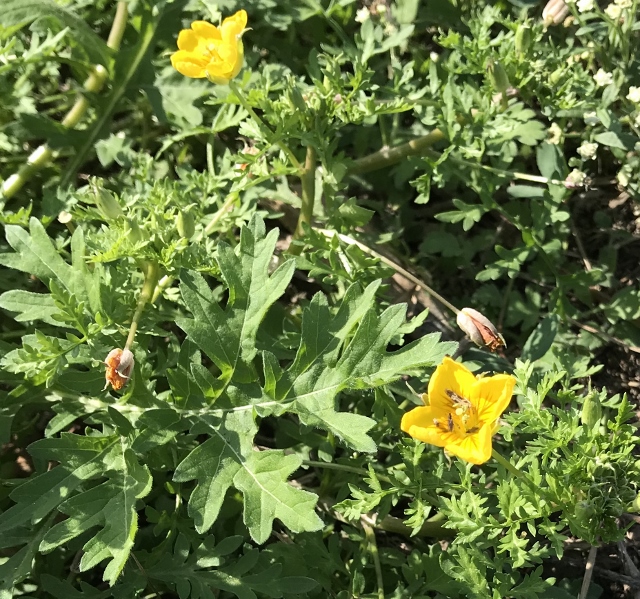
I snapped a couple of shots and rushed home to upload onto www.iNaturalist.org. Bulbous Buttercup (Ranunculus bulbosus) popped up as “visually similar.” It looked like a match, so I chose it.
The next morning, I had a report — a very polite identifier disagreed and suggested my plant was a Large Selenia, Selenia grandis. In the comments section, he left a message: “Great find!”
That was fun! It seemed I’d found something unusual. I made a mental note to stop by periodically and collect seeds as they developed. Of course, I looked it up in Richardson & King, “Plants of Deep South Texas,” page 157.
I stopped to check the status a couple of weeks later. The plant had filled out to a large lush mound of green leaves and lots of bright yellow flowers. It had grown to nearly a foot tall with about a two-foot oblong spread. No seeds yet.
Another mound was growing nearby but closer to the plowed field than to the road.
And then one day, the mounds were gone. They’d been mowed down! I was sad. And then hopeful. The plants weren’t plowed under, just whacked off from a mower, but not completely scalped.
As luck would have it, our neighbor, the farmer who works that acreage, and the acreage adjacent to our property, was riding along the fence row in a utility vehicle when I was working in the garden near the fence.
He stopped, we chatted. I told him the story of the “great find” at the road edge of one of his fields and the subsequent tragedy. I showed him my phone photos and also pulled up the upload at my iNaturalist app.
We both agreed, this is the first year either of us had seen this particular plant. The plant is along the road leading from our property to anywhere we go. It’s also one of the roads I scour for species during an iNatualist bioblitz.
Our neighbor gave me permission to extract one of the plants for safe-keeping — and hopefully, eventual seed collection.
Fortunately, when I went back to collect a specimen, there were a good number of plants in the surrounding area near the road. I was happy to see that, but the farmer had noted that the across-the-way neighbor keeps that easement mowed on a regular basis. That meant, to me, that the plants might not survive that continual threat. These come-back plants already were smaller and shorter, although I was glad to see they were producing blooms — but for how long?
I pulled the shovel out of my truck and looked for a hearty specimen to rescue. I must say, it wasn’t the quick and easy task I’d envisioned. Although the ground have been plowed — once upon a time — it hadn’t been worked since. The soil was in chunks. Chunks as solid as cement. Even stabbing the shovel into the earthquake-like soil crevices, I felt in danger of chipping the point off the shovel.
I finally managed to get a clump of rock/soil/plant into a plastic bag. I glanced around, no one was about, so I high-tailed it home before the plant police could stop and question me. I was prepared to name-drop, with permission, had I been detained.
Once home, I ran water in the bag, the roots came loose from the rock-solid clump of soil and the plant is now all perky in its new temporary home where I’ll babysit it for a few weeks before finding a good — safe — spot for it on the property.
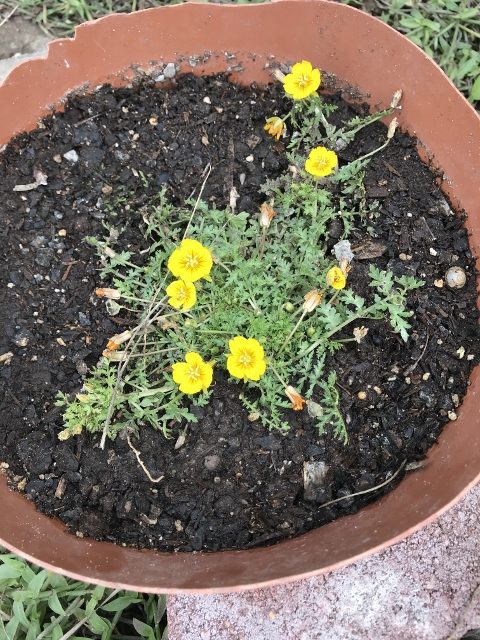
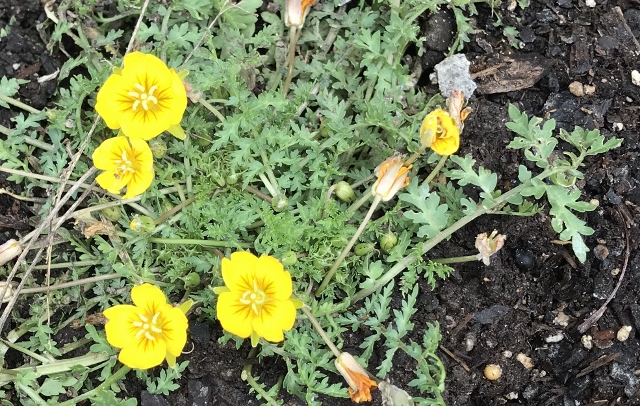
One of my favorite plant gurus once told me that native seeds can lay dormant in the soil for many, many years and then suddenly produce plants after something has caused a disturbance to the soil. That could explain the sudden appearance of something new.
Check out the roadsides near where you live, or take a road trip, off the beaten path, with friends this week. Discover your own fun finds and enjoy the upcoming pleasant temperatures!
That was a “great find” indeed! Both the plant and the warbler. Lovely!
Yes! Just when you’re thinking it’s only going to be an ordinary day . . . .
Your eyes are always open to possibilities, so you discover wonderful things.
You’re right. It’s the training — look at the world as that next photo; look at everything as the next story!